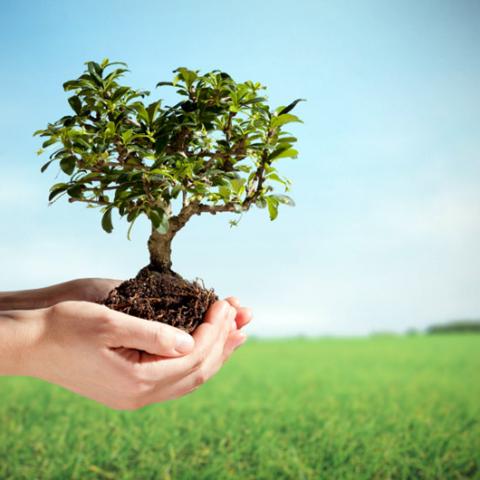Plant a TREE

We plant trees for lots of reasons, to mark occasions, to have a picnic under, to make an enchanted forest, to hang a birdhouse from, to make books from, to grow your own free snacks, to climb and catch a view that would otherwise get missed. Trees support and sustain biodiversity, attracting animals, birds and mammals and they sustain us - without them life would be near impossible on planet earth; they soak up harmful carbon dioxide emissions by converting them into oxygen. Planting trees is one of the most basic of environmental acts.
1. The ideal time to plant trees and shrubs is during the dormant season and in the fall after leaf drop or early spring before budbreak. Weather conditions are cool and allow plants to establish roots in the new location before spring rains and summer heat stimulate new top growth.
2. Dig a shallow, broad planting hole. Make the hole wide, as much as three times the diameter of the root ball but only as deep as the root ball.
3. Identify the trunk flare. The trunk flare is where the roots spread at the base of the tree. This point should be partially visible after the tree has been planted
4. Remove tree container for containerized trees.
5. Place the tree at the proper height. Before placing the tree in the hole, check to see that the hole has been dug to the proper depth and no more. The majority of the roots on the newly planted tree will develop in the top 12 inches of soil.
6. Straighten the tree in the hole. Before you begin backfilling, have someone view the tree from several directions to confirm that the tree is straight.
7. Fill the hole gently but firmly. Fill the hole about one-third full and gently but firmly pack the soil around the base of the root ball.
8. Stake the tree, if necessary. Studies have shown that trees establish more quickly and develop stronger trunk and root systems if they are not staked at the time of planting. However, protective staking may be required on sites where lawn mower damage, vandalism, or windy conditions are concerns.
9. Mulch the base of the tree. Mulch is simply organic matter applied to the area at the base of the tree. It acts as a blanket to hold moisture, it moderates soil temperature extremes, and it reduces competition from grass and weeds. Some good choices are leaf litter, pine straw, shredded bark, peat moss, or composted wood chips.
10. Provide follow-up care. Keep the soil moist but not soaked; overwatering causes leaves to turn yellow or fall off. Water trees at least once a week, barring rain, and more frequently during hot weather.
Source: treesaregood.com, bbc.co.uk.